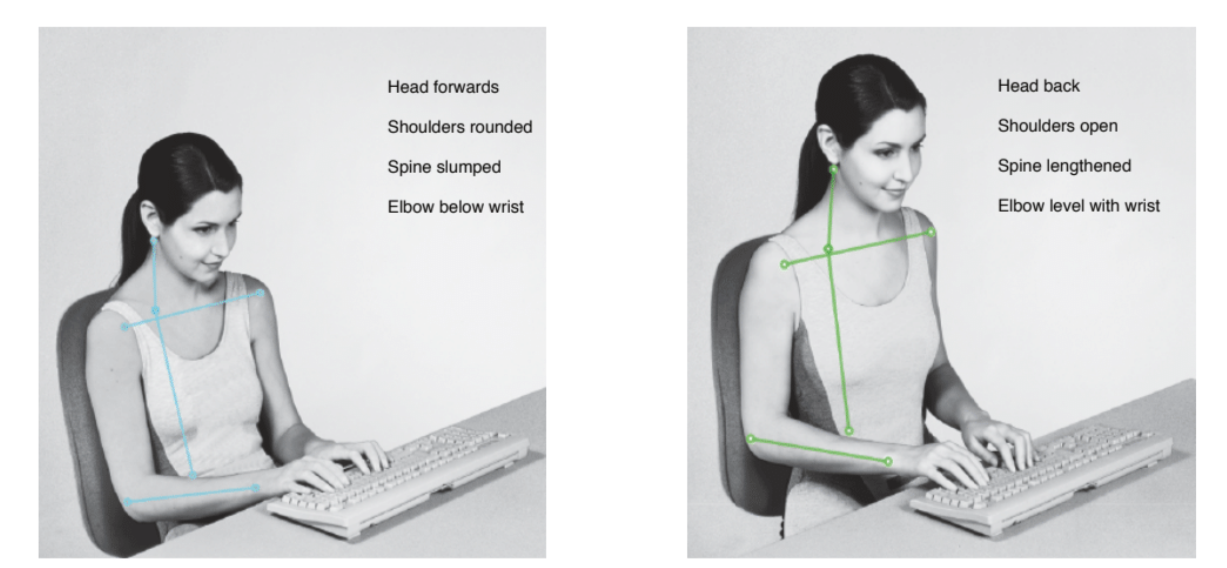How to sit with a healthy posture
For a healthy posture sit upright with your head held over your shoulders in line with your hips and your back fully supported by the chair. This encourages the spine into it’s neutral ‘balanced’ position. By using the seat level the upper pelvis tilts forwards. The spine lengthens into a natural ‘S’ shape with weight more evenly distributed across the intervertebral discs and a better balance in supporting musculature.

Unhealthy – slouched
Healthy – upright

Pelvis
Pelvic crest forced backwards.
Spine
Spinal column C-shaped, with uneven compression of the lumbar discs and strained musculature.
Muscles
Elongated in back, slack in abdomen. Imbalance can weaken the lower back.
.
Lower abdomen
Compressed. Poor digestion.
Breathing
Shallow; only using upper part of the chest. Sooner onset of fatigue.
.
Circulation
Restricted.
Movement
Limited freedom of movement.
Pelvis
Pelvic crest rotated forwards.¹
Spine
Spinal column S-shaped, with even weight distribution on lumbar discs and balanced musculature.
Muscles
Less strain in the back; abdomen toned. Balance maintained, lower back kept strong.
Lower abdomen
Not compressed. Improved digestion.
Breathing
Deeper, using both diaphragm and upper part of chest. Delays the onset of fatigue.
Circulation
Less restricted.
Movement
Greater freedom of movement.
¹ Using a forward tilting seat to aid an upright posture is not advisable for certain medical conditions. If there is any pain do not persist, use the seat in a level position or where comfortable. Initially vary posture regularly to allow muscles to adjust to any new position.
Posture differences when using a computer and when writing
The spine should always be encouraged into its natural S-shaped curve, with the head held over the shoulders in line with the buttocks. Create sufficient room to work, especially if multitasking, placing equipment on stands or arms if necessary.
When working at the computer, the middle row of the keyboard should be level with the elbow, and forearms parallel to the floor. Place the mouse within easy reach. The screen should be on eye level, with a visual angle of 0-21°.


Conversely, if writing and not using a computer, the elbow should be just below the desk top. Use a writing slope: it reduces viewing distance, lessens eye strain and limits the body leaning forwards. Always hold the head upright to maintain a balanced spinal posture. If taking notes from a book, keep it within the field of view using a book attachment above the slope.
The information provided on this page is courtesy of Alan Glaser at www.sitability.co.uk.
Alan has spent many years designing and manufacturing excellent high quality floating tilt chairs. He is one of the most knowledgeable minds about seating. His own article about healthy sitting is worth reading.
I have known Alan personally over many years and we a share a passion for healthy seating. Please visit his website for more details and workstation solutions, and find his downloadable PDFs below: